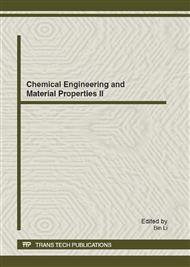p.839
p.843
p.848
p.852
p.856
p.861
p.866
p.871
p.875
A New Kind of Semi-Active Suspension Magnetorheological Fluid Shock Absorber Damping Force Model
Abstract:
Based on the damping characteristics, design a kind of magnetic fluid shock absorber, and the damping force theory formula, derived from the damping force of the formula can be that, according to the design of shock absorber, in the vehicle suspension on the dynamic performance simulation test for the damping-displacement characteristic and speed characteristics is verified by experiments, the proof is in the formula of the damping force of the damping force and the polarization current into nonlinear (secondary) relationship is reasonable, to design the actual shock absorber to really have a certain reference value.Intorduction
Info:
Periodical:
Pages:
856-860
Citation:
Online since:
July 2012
Authors:
Price:
Сopyright:
© 2012 Trans Tech Publications Ltd. All Rights Reserved
Share:
Citation:


